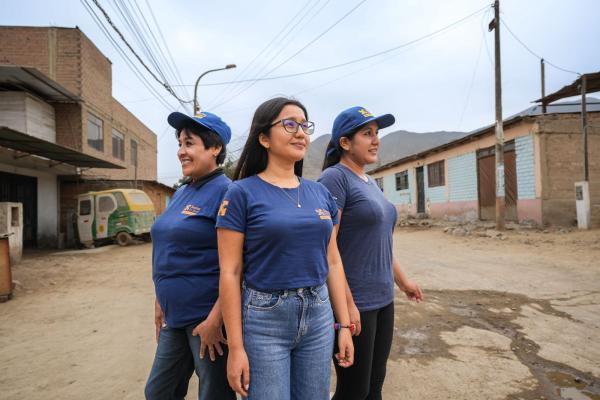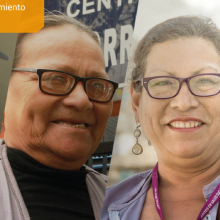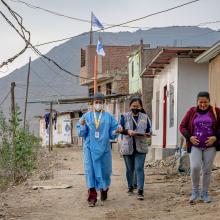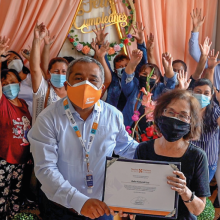Imagine two people with the same chest pain. One man receives immediate cardiac testing; one woman is sent home with the recommendation to reduce stress. Years later, when her condition has worsened, she finally receives a diagnosis. This delay in medical care is not a coincidence, but a systematic problem.
A study in Denmark looked at 6.9 million people and found that, for 770 diseases, women were diagnosed up to four years later than men. This gap is exacerbated by the underrepresentation of women in clinical trials, which hinders the development of appropriate treatments and increases the risk of adverse effects in them.
These differences also reflect a structural bias in diagnosis and treatment, with serious consequences for women’s health. On International Women’s Day, we discuss with specialists from our programs the main obstacles they face, the barriers that persist and the structural changes the health system needs to ensure equitable and timely care.

Isabel Torres, enfermera del proyecto TB Móvil, realiza búsqueda activa de casos de tuberculosis, acercando el diagnóstico temprano a más mujeres.
Foto de SES
Health problems faced by women
According to the Ministry of Health (MINSA),75.5% of the cases of depression treated in 2023 corresponded to women. In addition to depression, anxiety and stress are the most frequent mental health disorders, according to Carmen Contreras, head of the Mental Health Program (SAME) of Socios En Salud.
To this are added the disorders associated with abuse and gender violence, with profound emotional and psychological consequences. For her part, Judith Jiménez, head of the Tuberculosis (TB) Program, points out that cultural norms and inequalities limit women’s and girls’ access to TB treatment and prevention services.
“Women may face barriers to care because, in many cases, male family members, who often manage household resources, are unwilling to pay for these services,” Jiménez explains.
In terms of non-communicable diseases, Giuliana Hernández, from the NCD and Cancer Program, highlights that diabetes affects 63% of women, despite the fact that they tend to follow treatments better than men. As for cancer, breast cancer accounts for 18.5% of cases, followed by cervical cancer (11.5%) and colon cancer (6.4%).
Carla Rodríguez, from the HIV and STI Program, points out that for every four men with HIV, there is one woman with the infection. In the first half of the year, according to a report by the National Center for Epidemiology, Prevention and Disease Control, 24.4% of the new cases reported were women, and 86% were between 15 and 49 years old, a key age for reproductive health.
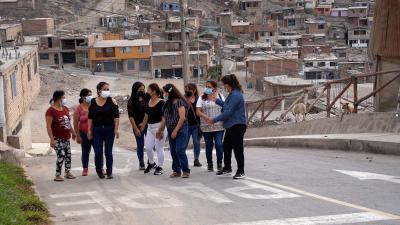
Mujeres del AA.HH. Santa Rosa, en el distrito de Carabayllo, se reúnen cuatro veces por semana para elaborar cerámica y velas, generando ingresos y fortaleciendo su comunidad.
Foto de SES
Barriers in accessing healthcare
Fear of stigma remains one of the main barriers for women to seek medical care. In mental health, many avoid seeking consultations for fear of being seen as weak or unable to fulfill their family responsibilities. “Many internalize this idea, believing that their well-being is secondary to that of others,” says Contreras.
The lack of privacy in health services also generates discomfort, especially in TB or reproductive health diagnoses. Added to this is the economic factor: although some treatments are free, indirect costs, such as transportation and additional drugs, can be unaffordable. Many women, moreover, prioritize the health of their children or family members, postponing their own care.
“The absence of policies that allow women to take time off work for medical appointments makes prevention and early detection difficult. Although maternity protections exist, few companies grant leave for other care. Not to mention in the informal sector, many fear losing daily income if they go to the doctor,” Hernandez explains.
Rodríguez adds that stigma also affects those living with HIV: “Many hide their diagnosis for fear of rejection, although in most cases they were infected by their partner. The stigma comes mainly from the social and family environment, where they are unfairly labeled.”
Opportunities for improvement in the healthcare system
For these four healthcare professionals, narrowing the gender gap requires a comprehensive approach that prioritizes the participation of women in health policymaking, ensuring that their needs and perspectives are taken into account in decision-making.
“Involving them actively in the creation and implementation of health programs would help improve awareness of available services and promote a more inclusive approach to care,” says Contreras.
An example of this is the community agents with whom Socios En Salud works. “They are mostly women,” Jiménez stresses, “they contribute to health promotion and disease prevention in their communities, as they are in direct contact with the families, live with them and know their problems.”
Access to health care must also be rethought. “It is crucial to extend opening hours and facilitate telemedicine services for women with time constraints,” Hernandez points out. Also, programs should be created to include men in family health care, alleviating the burden of care that falls mostly on women.
The road to more equitable care requires structural changes, but also a social commitment to recognize and address the invisible barriers that continue to limit women’s access to decent health.
If you would like to receive more information about our activities, subscribe here. Join our health movement!
